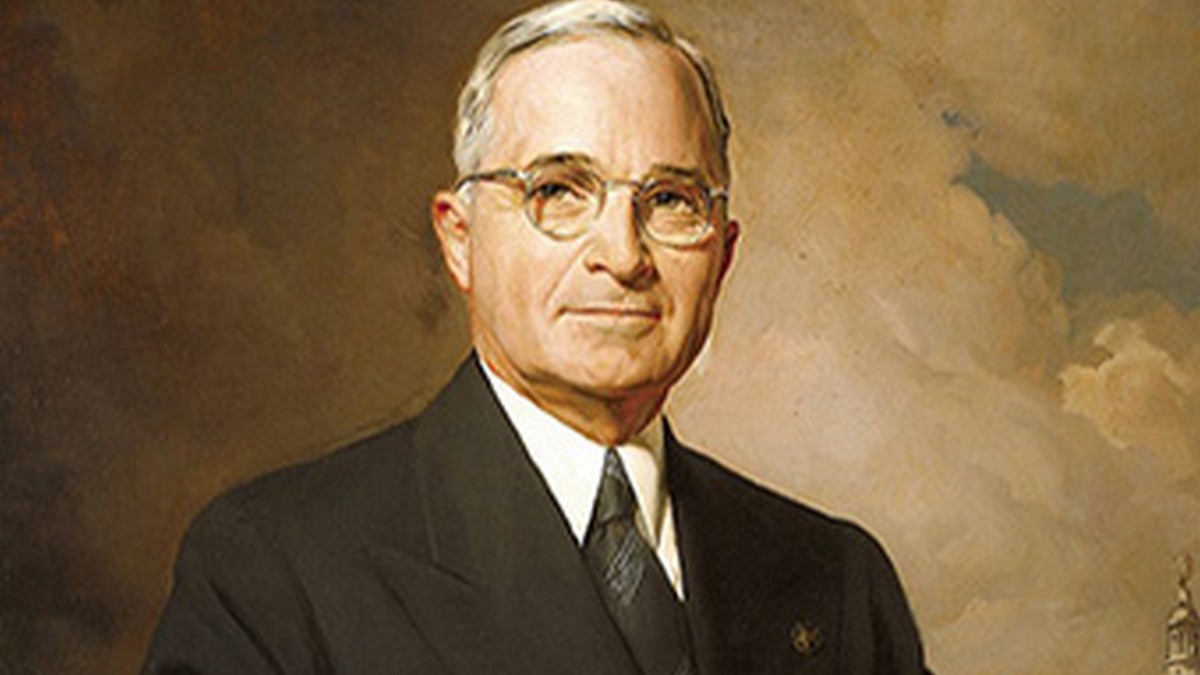Editor’s Note: This is a series of profiles taking a closer look at US presidents ahead of the 2024 presidential election between Donald Trump and Kamala Harris.
Harry S Truman ushered in the world we live in today – the nuclear age.
Though it was American scientists who built the bomb out of fear of the Nazis getting it first, it was Truman who ultimately gave the order to drop the nuclear weapons on Hiroshima and Nagasaki in 1945.
He also changed US foreign policy forever with his Truman doctrine which laid out that “the policy of the United States to support free peoples who are resisting attempted subjugation by armed minorities or by outside pressures.”
Let’s take a closer look at the 33rd President of the United States.
Early life
Truman was born on May 8, 1884, in Missouri’s Lamar.
His parents were John Anderson Truman and Martha Ellen Truman.
Truman went to a high school in Independence, Missouri and worked as a bank clerk.
After his father’s passing, Truman became a farmer.
He signed up for the army at the beginning of World War I and saw action in France.
After the war ended, he returned home and married his childhood sweetheart Elizabeth Virginia Wallace with whom he had a child.
Impact Shorts
More ShortsTruman tried his hand at a business in Kansas, but that went to the wayside during the recession.
Politics
Truman began his political career in 1922 as a county judge with help from Thomas Pendergast, the powerful Democratic political chief of Kansas.
Truman lost his 1924 re-election bid but won again in 1926.
Now, bound by term limits but having built a reputation for fairness and efficiency, Truman accepted Pendergast’s offer to run for Senate – and won.
As a Senator, Truman helped pass the Civil Aeronautics Act of 1938 and the Transportation Act of 1940.
He also won re-election in 1930 and served on the Senate War Investigating Committee – aimed at reducing waste and corruption during World War II and making sure defence contractors delivered what they promised.
Time in office
In 1944, Truman was tapped to run as then president Franklin D Roosevelt running mate against Thomas E Dewey and John W Bricker.
The result was an electoral wipeout in favour of the popular incumbent – 432 Electoral Votes to 99 Electoral Votes.
But Truman made little impact as vice president.
He met FDR just twice in his second term and was out of the loop with all of the administration’s plans.
He had no knowledge of the development of the atomic bomb or growing difficulties with Soviet Russia.
“Look at all the Vice Presidents in history. Where are they? They were about as useful as a cow’s fifth teat,” Truman later reflected.
Then, barely three months into FDR’s second term, in April 1945, the American icon passed away.
And Truman took the oath of office as president.
He told reporters he felt “the moon, the stars, and all the planets had fallen” on him.
One of the biggest challenges Truman had was guiding America through the final stages of World War II.
Truman attended the famous Potsdam conference in Germany and met with Allied leaders to decide the future of Germany and how to handle Japan.
Though the conflict was wrapping up, Japan was refusing to surrender.
Truman decided to force the issue – by dropping a nuclear bomb.
The president in his 7 August, 1945, speech laid out his rationale to the American public.
“It was to spare the Japanese people from utter destruction that the ultimatum of July 26 was issued at Potsdam. Their leaders promptly rejected that ultimatum. If they do not now accept our terms they may expect a rain of ruin from the air, the like of which has never been seen on this earth….The fact that we can release atomic energy ushers in a new era in man’s understanding of nature’s forces,” he said.
On August 6 and 9, 1945, America bombed Hiroshima and Nagasaki.
Five days later, Japan surrendered.
Truman’s term also saw the beginnings of the Cold War with the Soviet Union – which would last for decades.
He also recognised the state of Israel in May 1948.
Legacy
Without question, the detonation of nuclear weapons on Japanese soil remains one of the most consequential decisions ever taken by a US president.
Was he a hero for hastening Japan’s capitulation and saving the lives of US troops?
Or a villain for leaving over 100,000 dead and generations of Japanese crippled and deformed?
Historians continue to debate the decision to this day.
There appear to be no easy answers.
)